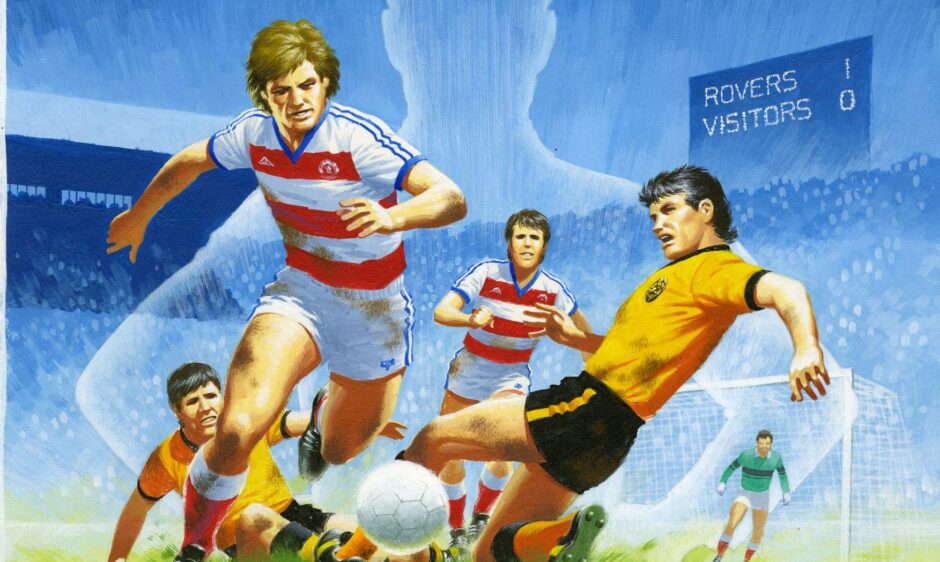
Football Picture Story Monthly was consigned to comic book history when the axe fell 20 years ago after 418 issues.
The pocket-sized book was launched by DC Thomson during the 1986 World Cup in Mexico and managed to outlast all of its rivals before it was abruptly ended.
The final issue in 2003 featured a strip drawn by Tony O’Donnell which was titled A Century of Football.
The front cover featured an image of Dundee FC legend Billy Steel.
It was a poignant finale.
A Century of Football begins in 1903 and charts the story of Cobblestone Lane in the industrial town of Darvel which is the home ground of Second Division Lawside.
Fergie Slater scores the first goal on the ground and would be sold to London giants “Torrenham” with a new stand being built with some of the proceeds.
There was triumph and tragedy
A League Championship win in the 1920s thanks to the goals of star striker “Dixie Payne” is followed by the stadium being bombed during the Second World War.
It rises again from the rubble and becomes the best in the country.
The FA Cup is won in the 1950s which brings European football to Cobblestone Lane and games against the likes of “Moscovite Dynamo” and “Real Matrid”.
“George West” emerges as the Lawside star of the Swinging Sixties with goalkeeper “Peter Stilton” among the other names to become legends in the decades that follow.
The Premiership era sees the club run by a property development company headed by ponytailed chairman Jon Knightly who wants to leave Cobblestone Lane.
A new 75,000 stadium is built to increase capacity and revenue.
Out with the old and in with the new in the name of progress.
A bittersweet irony not lost on FPSM fans.
Captain “Patrick Pierra” leads the Lawside team out for the final game at the old ground which ended as the evening sun dipped below the stand.
In the final scene the ground echoed to the ghosts of the illustrious past.
The great games from 100 years of Lawside were “replayed on this field of dreams”.
It was the perfect epitaph for Football Picture Story Monthly (FPSM).
Industrial towns and underdog stories
FPSM was a world where the underdog could triumph against the odds and a young player always had the chance to be spotted by a scout and make it to the top.
A place where a vain, self-absorbed and selfish player could be healed by the embrace of a local community after being forced to move to a smaller club.
Martin Lindsay and Bill Graham put forward the idea for FPSM in 1985.
They thought they stood a good chance by reviving some of the best DCT football stories in the A5 format including We Are United which was first published in Champ in 1984.
This popularity transferred over to FPSM with 43 United FPSM stories in total.
Martin said: “Still being active footballers at the time, Bill and myself liked to include some incidents from matches we played in and also use the names of some of our team-mates in the stories – that was always worth a pint on a Saturday night,” he said.
“Would it work today?
“I think FPSM could work today as a digital title with one issue a week being published.
“Whether today’s audience would be willing to pay for it given the amount of free stuff available is another discussion.”
This was the world of football on a black and white page.
Popular storylines included Jimmy Grant, We Are United, Kline and Powell and the nomadic mercenary ‘Matchwinner for Hire’ Jon Stark.
He picked up a £1,000 fee if his team won.
Bill said: “FPSM evolved over the years and was moderately successful, but distribution was the problem leading to a drop in sales and an end date being contemplated.
“We didn’t know exactly when, so we went a bit off piste.
“We had an author called Roy Preston who knew football inside out and was one of the few who could write great dialogue. We came up with a few different ideas.
“One was the story of a football used in a cup final and after being kicked out of the ground the story, The Ball, was about where it went and its last resting place.
“Another story was A Century of Football about a ground that lasted 100 years.
“The cover was a compilation with a photo of Dundee’s Billy Steel superimposed on a modern background. This was written by Roy Preston from an idea by Bill Graham and Bill McLoughlin. It was beautifully written and somewhat poignant.
“We worked with many authors and artists, but it would be unfair to single any out.
“However, it would be remiss not to mention the artistic talents of Barrie Mitchell, who drew Roy of the Rovers and Neville Wilson who were the mainstays.
“Bruno Marrafa, an Italian artist drew a few tales for us, including Island Dream which was based on the Walter Rojas signing at Tannadice.”
The axe fell abruptly in 2003
Dundee United were said to have pipped Italian clubs Sampdoria and Foggia for Rojas who was known as “the explosive one” when he arrived from San Lorenzo in Argentina.
Rojas became a tenant of the treatment room and rumours abounded that Jim McLean had been conned into buying the dud twin brother of the real player.
Bill said: “We knew the end was nigh because of falling sales and tried to extend its life by reprinting early stories, but the axe did fall pretty abruptly when we were told to buy no more stories.
“It was a blow when FPSM finished, but in an era that saw many other publications go to the wall as technology captured the imagination of the reader, it was inevitable.”
Garry Fraser started off in comics at DC Thomson and moved on to the boys’ papers before getting the job as editor of FPSM when Martin moved to Syndication.
“Looking back, my involvement as editor of the football libraries contributed to some of my best and most enjoyable years with DC Thomson,” he said.
“There was a freedom, a chance to indulge in good old-fashioned make-believe and the opportunity to work with the best scriptwriters and artists who were around in these halcyon days.
“The characters hatched in storyline debate were surprisingly true to life and even now 30 years later stand up to scrutiny.
“Jon Stark – a soccer mercenary; We Are United – behind the scenes of a top club; Kline and Powell – age old rivals, with a continuing axe to grind.
“I was incredibly proud to have FPSM on my CV and I think, given the correct support, we could have made an even bigger impact and lasted longer.
“Who knows, if it was still around today, those who bought it in their teens might now be buying it for their kids.”
Is there a market for a re-branded FPSM?
“My heart says yes, but my head says no,” said Garry.
“It would need a huge make-over and a bigger investment.
“And in a hugely competitive market – far more that it was in the publication’s heyday – it might be too much of a gamble.
“Reality calls, I’m afraid to say.”
All 418 editions are now collectors’ items.
Some individual copies now sell for up to £15.
All guaranteed to leave a certain generation of football supporters feeling nostalgic for an era of divot-strewn pitches, heaving terraces, communal baths and the distance between supporters and players being nothing like the chasm it is now.
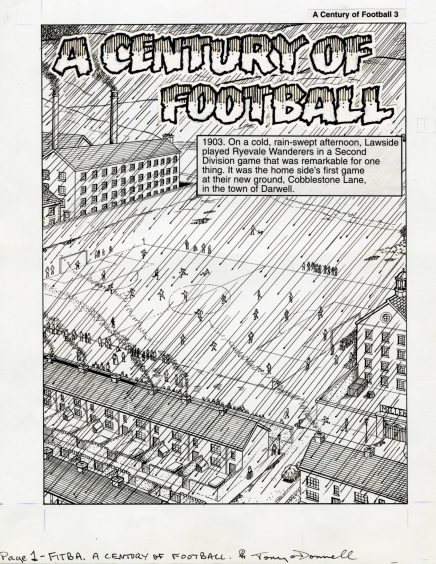
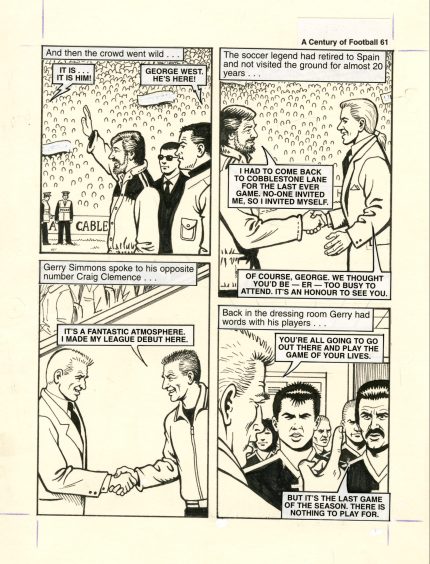
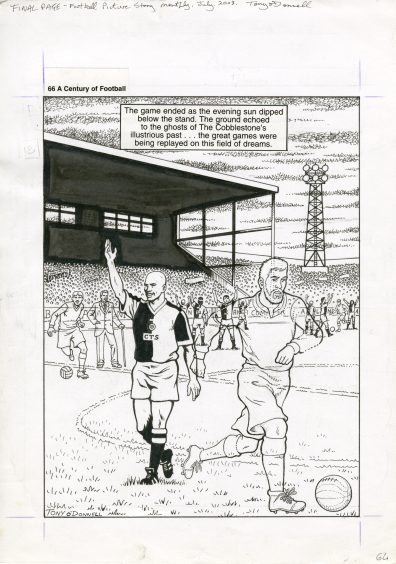
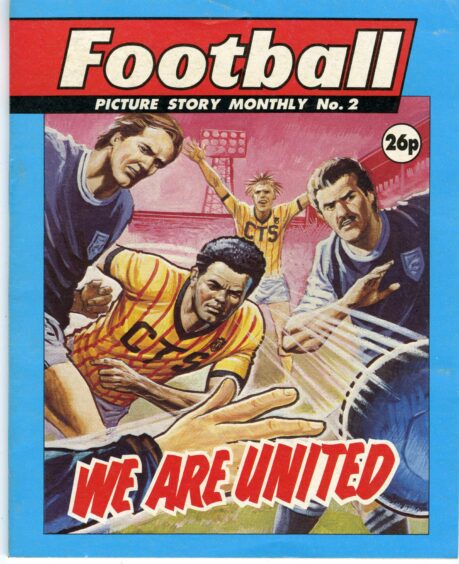

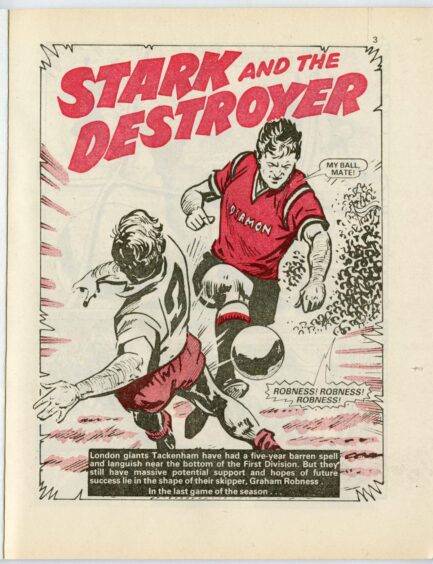
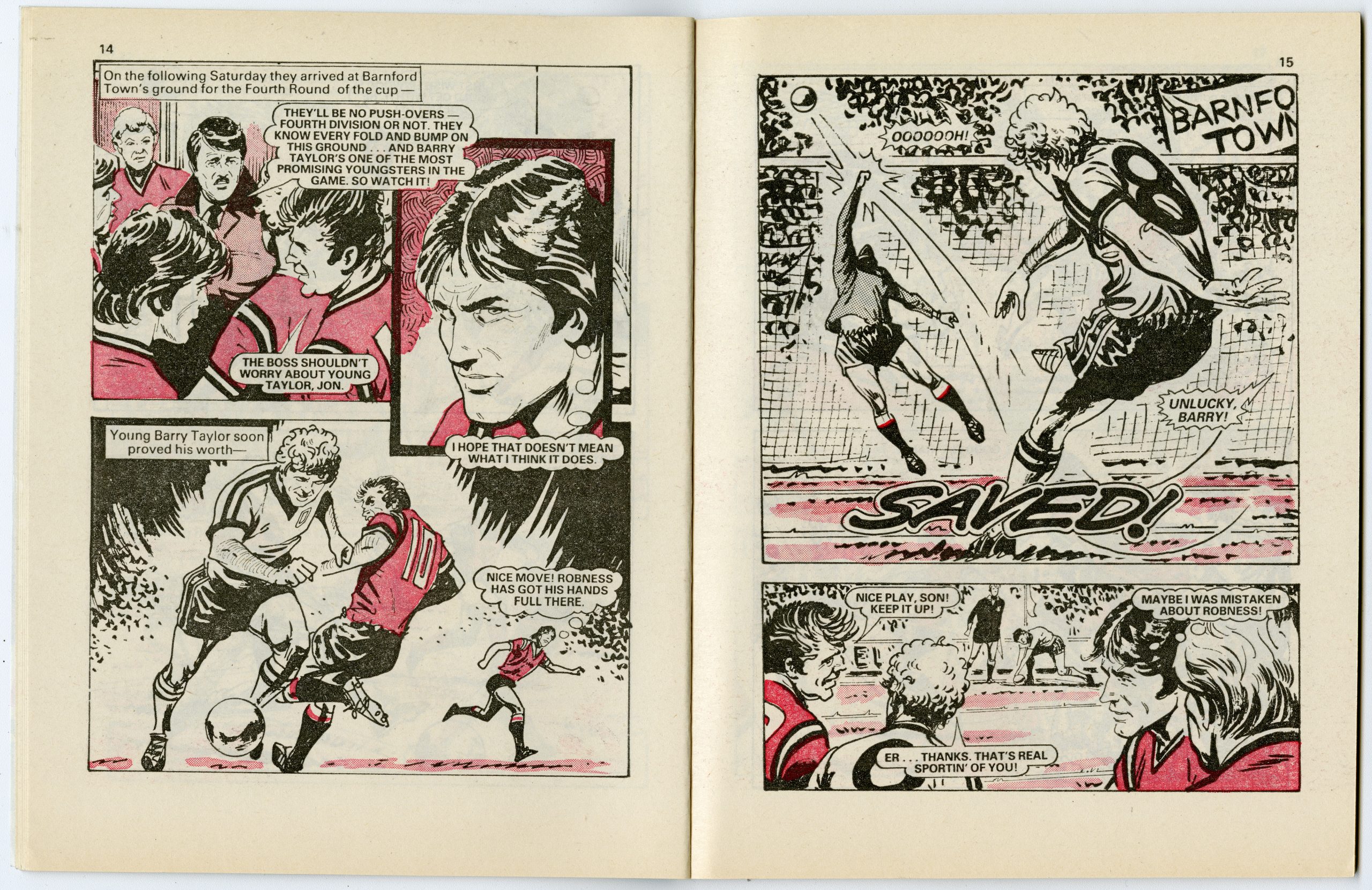
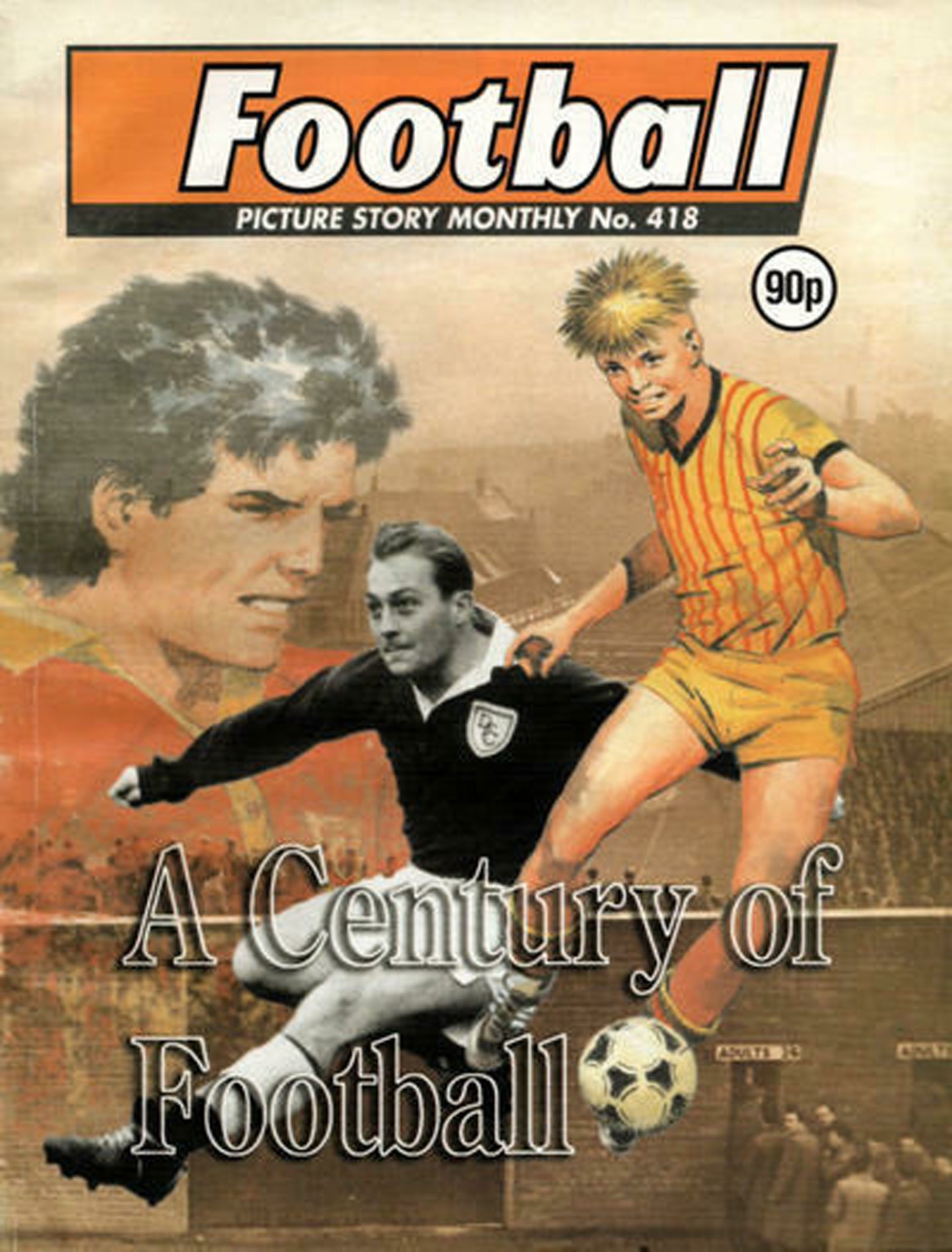
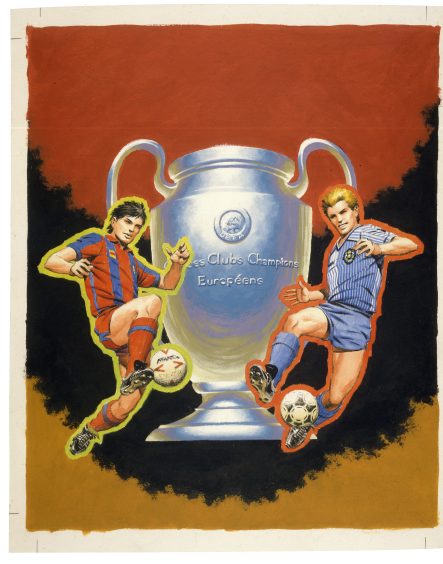
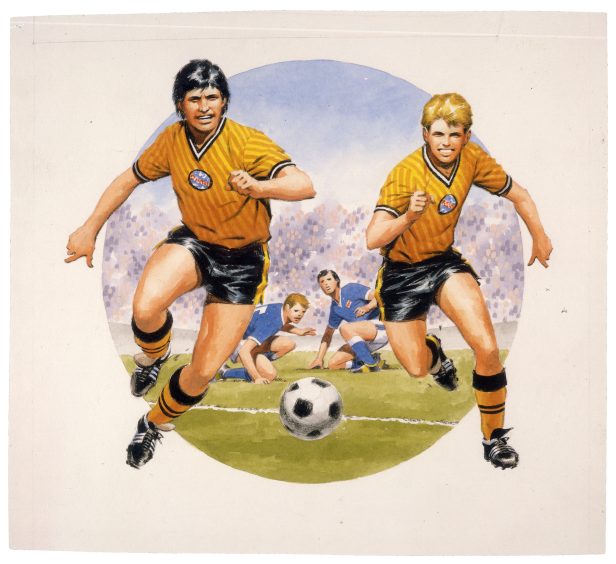
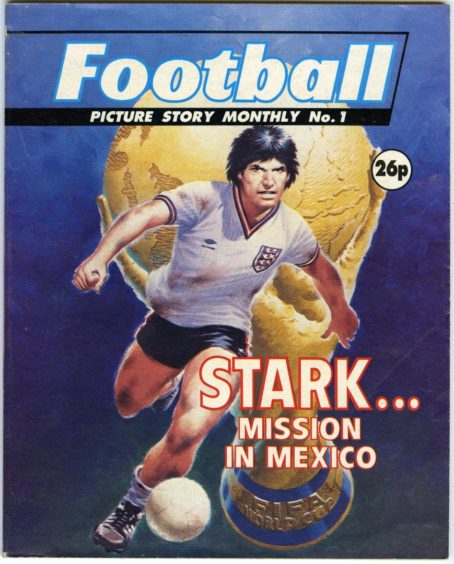
Conversation